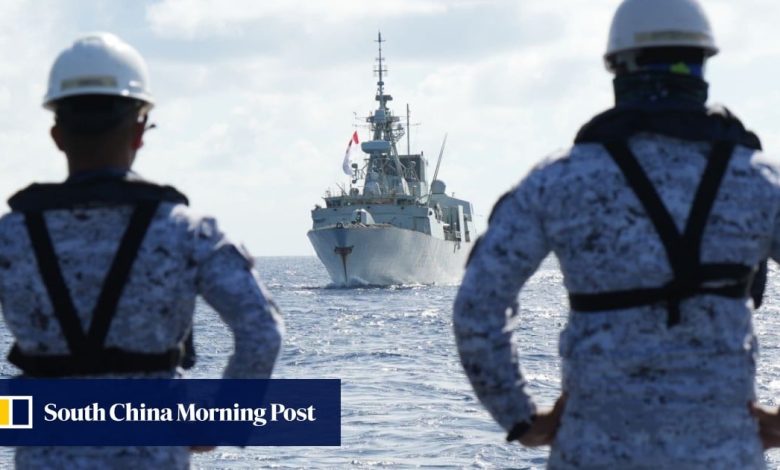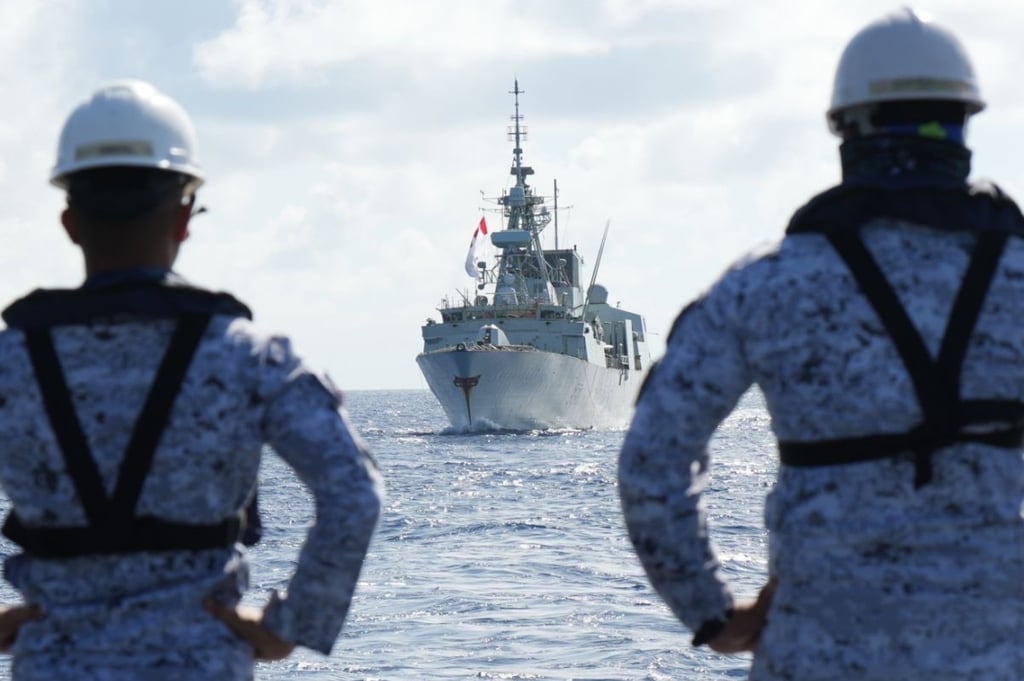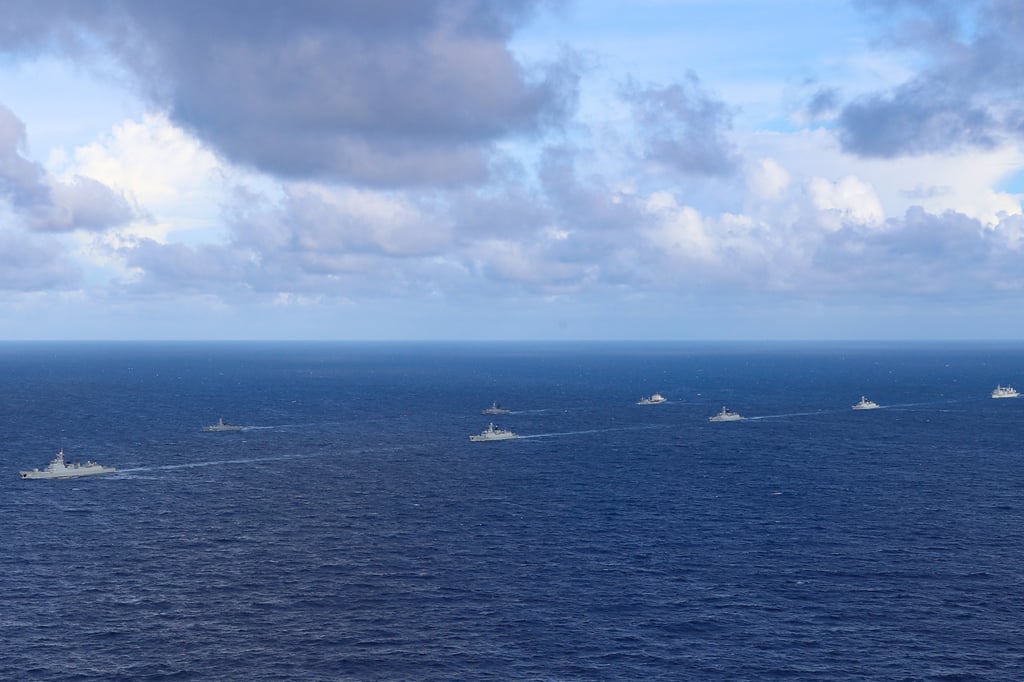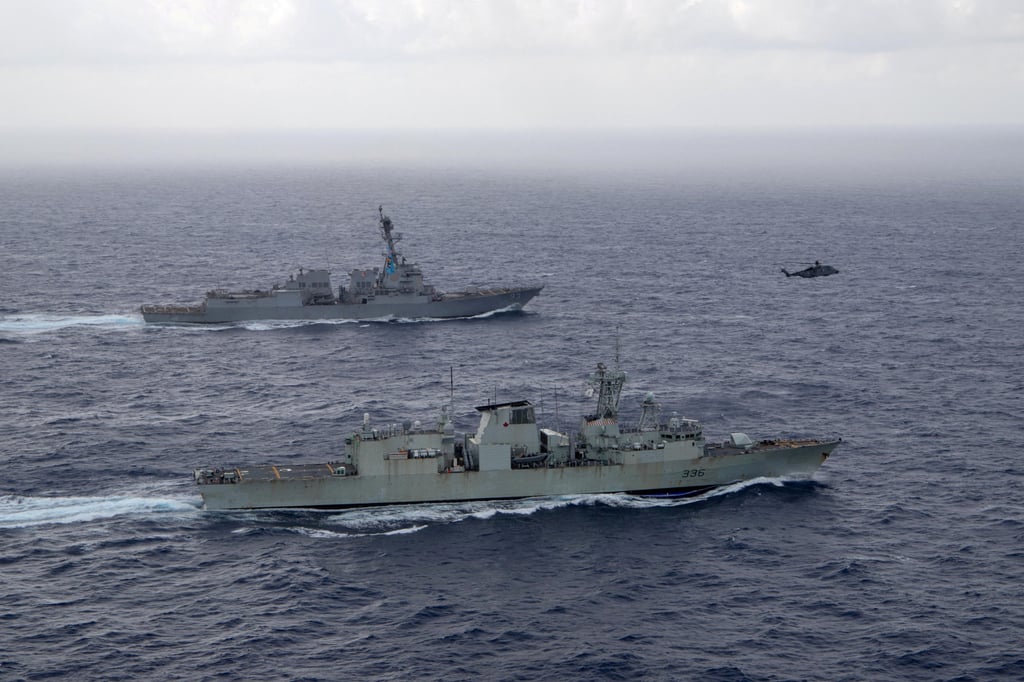Canada’s ‘absurd’ South China Sea play: challenging Beijing or undermining Asean?

The stakes are high. About US$5.5 trillion in global trade passes through the South China Sea’s strategic sea lanes each year, including a large portion of Canada’s commercial interests, according to Stephen Nagy, a professor of politics and international studies at Tokyo’s International Christian University.

‘Might-is-right approach’
“Southeast Asian countries are trying to bring in extra-regional partners to balance the size of China,” Nagy said, with the goal of preventing US-China tensions from spiralling in a way that negatively affects the region.
After all, the Asean charter demands that the bloc remain the primary driver of external partnerships, rather than the dictates of great power rivalry.
Yet Canada’s entry into the South China Sea may make it harder for Asean to achieve a unified stance. Analysts say a divided bloc ultimately benefits China, as it can more easily pursue its preferred mode of bilateral negotiations rather than dealing with Asean as a whole.
With Canada joining, it is more difficult for Asean consensus to be achieved
However, Malaysian foreign policy analyst Azmi Hassan said the presence of non-Asean actors made it difficult for the bloc to “achieve one voice” on the South China Sea dispute.
“With Canada joining, it is more difficult for Asean consensus to be achieved and this in a way benefits Beijing since a divided Asean will make it easier for China to pursue its bilateral mode of discussion,” said Azmi, a fellow at Malaysia’s National Council of Professors.
The problem, he explained, is that Asean is fundamentally split – some nations align with the US, others with China, while a third group “seem to care less since they are not directly involved in the dispute”.

Azmi questioned whether the South China Sea was truly the best theatre for Canada to flex its military muscle. “If safeguarding international order is the main reason, then bolstering Canada’s presence in the Arctic region makes more sense,” he said, pointing to Russia and China’s growing polar footprint.
Aspiration/capability mismatch
Canada fundamentally lacks the capabilities to take on a more muscular role in the South China Sea, according to Jeffrey Reeves, a security expert and senior fellow at the Institute for Peace and Diplomacy, a North American think tank.
The Canadian navy is thought to have just three warships in the entire Asia-Pacific theatre – “such an inconsequential force as to be largely meaningless”, according to Reeves, who called the idea that Ottawa could influence the balance of power in the region “absurd”.

This shortfall has not gone unnoticed. Last month, Nato Secretary General Jens Stoltenberg called on Canada to increase its military spending and present a concrete plan to do so, in order to “show authoritarian regimes that Western allies are aligned”.
Yet even as it lags on defence spending, Canada has committed an additional C$500 million (US$362 million) in military aid to Ukraine this year. This comes on top of the projected C$4 billion (US$2.9 billion) in arms and munitions Canada has already pledged and delivered to Kyiv.
In Reeves’ view, Canada’s involvement in the South China Sea is “entirely symbolic” – aimed more at showing “its Western allies and partners that it backs their strategic aims, in however limited a fashion”.
“In this respect, Canada is part of the US ‘coalition of the willing’ in the Indo-Pacific,” he said.
“For Washington, Canada’s participation provides it with a measure of legitimacy. With Canada riding along, the US can say it is acting as part of a consortium of states rather than unilaterally keeping the peace.”





